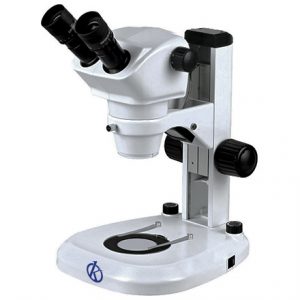The microscope is an optical device used to look at very small objects that the human eye cannot see. This instrument has a great ability to approach, so that it makes it possible to visualize, analyze and study particles. For this reason, it is an indispensable piece in any laboratory that is dedicated to the research or study of clinical samples.
Since the creation of the microscope in 1590 by Zaccharias Janssen and its improvement by Robert Hooke in 1655, great advances in science and medicine have originated, starting with Leeuwenhoek, who described red blood cells and sperm, thus becoming the father of microbiology today. Likewise, thanks to the invention of this equipment, protozoa, cells, bacteria, viruses, among others, could be described.
This instrument is used in various branches, including veterinary medicine. Veterinary medicine is a branch of medicine that deals with the health, diagnosis, prevention and treatment of diseases present in domestic and wild animals. In addition, this area is responsible for the health control and inspection of food and the prevention of zoonosis.
Applications of the microscope in the field of veterinary medicine
The microscope is a equipment that over the years has evolved to be coupled to the present, so there are several types of this, however, the most common and used, is the optical microscope, which was also the first to be created. In medical laboratories, specifically in the area of veterinary medicine, a microscope is used.
For example, in small veterinary clinics, optical microscopes are commonly used for the analysis of blood or stool samples, among others. On the other hand, the electron microscope is used in more advanced veterinary laboratories, to diagnose viral diseases. Blood, feces, urine and body fluids, among others, can be observed in this study, however, with a greater power of resolution. As an essential laboratory equipment, a wide variety of microscopes can be found on the market, however, those used in hospitals and veterinary clinics are photonic or optical microscopes, and in some cases electronic microscopes.
Optical microscope
The optical microscope, also known as the light microscope, is an instrument that allows the visualization of agents impossible to see with the naked eye, by using lenses, viewfinders and rays of light, which help to increase the image size of what is deposited in the sample, to be able to analyze and examine it. It should be noted that this type of microscope was the first to be created and used in laboratories, leaving great advances in science, especially in the area of biology and medicine.
Microscopic organization and structure is essential for research in areas such as veterinary medicine. Optical microscopes generally consist of microscopes, eyepiece microscopes, lenses, platinum microscopes, focus microscopes, and a capacitor. The following are the parts that make up every optical microscope, in order to understand how they work:
- The eyepiece, is a system of lenses through which we can observe the image.
- The lenses, located at the top of the microscope tube, are named for the closeness between the piece and the observer’s eye.
- The platen, is a small platform where the sample is placed.
- The focus, guides the light to the condenser.
- The condenser concentrates the light from the spotlight, to evenly illuminate the sample.
Kalstein-branded microscopes
At kalstein we are MANUFACTURERS of various types of microscopes and laboratory equipment at AFFORDABLE PRICES for every pocket. Our high-tech models include binocular, trinocular, digital, multivision, stereoscopic, metallurgical, polarization, ultraviolet microscopes, among others. To specify your PURCHASE visit our catalog by clicking on HERE
Here are the features of our YR series biological microscope:
- Monocular, binocular and trinocular head available for different needs.
- Large operation space with nozzle back.
- Easier comparison test with large double layer mechanical stage. More comfortable operation with AC and FA low position knob, exceptionally low stage and narrow base control.

